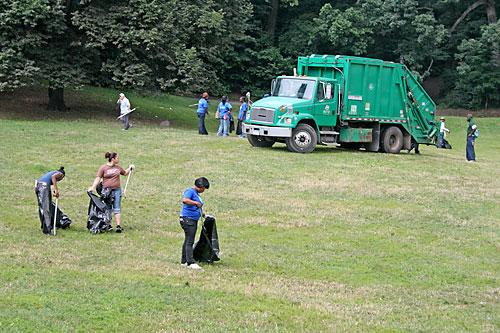The city has spent millions installing environmentally-friendly sidewalk planters across Kings County for years — only to let hundreds of them fall into disrepair, according to a recent report by City Comptroller Scott Stringer.
The planters, known as rain gardens, have been touted as innovative tools to prevent sewerage overflow and beautify the sidewalks. Since 2016, the Department of Environmental Protection has spent $160 million installing the miniature gardens across the city, saying that the shrub-filled, green oases help soak in rainwater that would otherwise overburden the sewage system.
But the Comptroller’s report — while upholding rain waters’ environmental benefits — claimed that the planters have become hotbeds for trash. Only about one-third of Brooklyn’s 1,709 rain gardens receive full maintenance by the city’s Department of Environment Protection, the report found, and of the 102 rain gardens personally audited by Stringer’s office, 95 were found filled with litter, weeds, and sparsely-planted greenery.
Stringer argued that the planters’ poor condition may prevent them from absorbing rain water, which could cause storm runoff to flow into sewers and into local waterways.
“DEP must step up to the plate and properly maintain these vital resources,” he wrote in the report. “We cannot win the battle to protect New Yorkers against the next superstorm and keep our waterways clean if we allow these vital resources to fall into disrepair due to neglect.”
Stringer’s office recommended that the agency keep written and photographic records of the rain gardens, perform more frequent maintenance checks, and verify its own maintenance logs, among several other suggestions.
Brooklynites have pushed back against the rain gardens, arguing that the green planters will become burdens for residents. In September, a Dyker Heights resident circulated a popular petition to nix plans to build the gardens in southern Brooklyn, which city planners will install in 2022. Residents in Queens have also protested the gardens — claiming that they had no input in the decision to install the planters. In response to the pushback, the Department of Environmental Protection allowed some residents to opt-out or choose to install a concrete slab rather than a full garden, where rain falls through grates and onto a stone bed.























